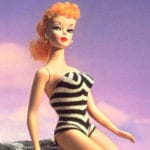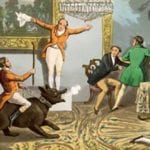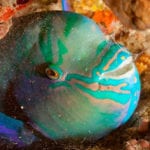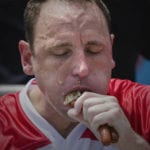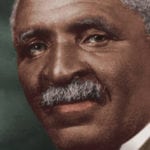 Weird Stuff
Weird Stuff  Weird Stuff
Weird Stuff  Mysteries
Mysteries 10 Tragic Disappearances and Deaths in Joshua Tree National Park
 History
History 10 Ways Childhood Really Sucked in the Old West
 Music
Music 10 Name Origins of Famous Bands from the 1990s
 Religion
Religion 10 Biggest Turnarounds by the Catholic Church
 Weird Stuff
Weird Stuff 10 Unbelievable Times Laws Had Unintended Consequences
 Humans
Humans Ten Historic Women Who Deserve Way More Credit Than They Got
 Movies and TV
Movies and TV 10 Films That Spawned Major Lawsuits
 History
History Ten Times Towns Were Wiped Off the Face of the Earth
 Creepy
Creepy 10 of the Most Disturbingly Haunted Public Houses in the UK
 Weird Stuff
Weird Stuff 10 Niche Subcultures That Are More Popular Than You Might Think
 Mysteries
Mysteries 10 Tragic Disappearances and Deaths in Joshua Tree National Park
 History
History 10 Ways Childhood Really Sucked in the Old West
Who's Behind Listverse?

Jamie Frater
Head Editor
Jamie founded Listverse due to an insatiable desire to share fascinating, obscure, and bizarre facts. He has been a guest speaker on numerous national radio and television stations and is a five time published author.
More About Us Music
Music 10 Name Origins of Famous Bands from the 1990s
 Religion
Religion 10 Biggest Turnarounds by the Catholic Church
 Weird Stuff
Weird Stuff 10 Unbelievable Times Laws Had Unintended Consequences
 Humans
Humans Ten Historic Women Who Deserve Way More Credit Than They Got
 Movies and TV
Movies and TV 10 Films That Spawned Major Lawsuits
 History
History Ten Times Towns Were Wiped Off the Face of the Earth
 Creepy
Creepy 10 of the Most Disturbingly Haunted Public Houses in the UK
10 Eccentric Eating Habits Of Influential Figures
Humanity has always had an intimate relationship with food. So it should come as no surprise that some of the most notable, influential figures throughout history have often had bizarre notions of how and what to eat.
10 Zuckerberg Only Eats What He Kills

Facebook founder Mark Zuckerberg is famous for taking on yearlong challenges of self-improvement, such as wearing a tie every day in 2009 and studying Chinese every day in 2010. It came as a bit of a shock, though, when he announced in 2011 that “the only meat I’m eating is from animals I’ve killed myself.” After announcing the decision on his private page, he posted, “I just killed a pig and a goat,” which prompted various reactions from his followers.
According to an email that Zuckerberg sent to Fortune magazine, “I started thinking about this last year when I had a pig roast at my house. A bunch of people told me that even though they loved eating pork, they really didn’t want to think about the fact that the pig used to be alive. That just seemed irresponsible to me. I don’t have an issue with anything people choose to eat, but I do think they should take responsibility and be thankful for what they eat rather than trying to ignore where it came from.”
His instructor was Silicon Valley chef Jesse Cool, who introduced Zuckerberg to local farmers and advised him on the slaughters of his first chicken, pig, and goat.”He cut the throat of the goat with a knife, which is the most kind way to do it,” said Cool to Fortune. Zuckerberg’s first kill, however, was a lobster that he boiled alive. Initially, this was emotionally difficult for Zuckerberg, but he said he felt better after eating it. As he told Fortune in an interview, “The most interesting thing was how special it felt to eat it after having not eaten any seafood or meat in a while.”
9 Beethoven’s Soup
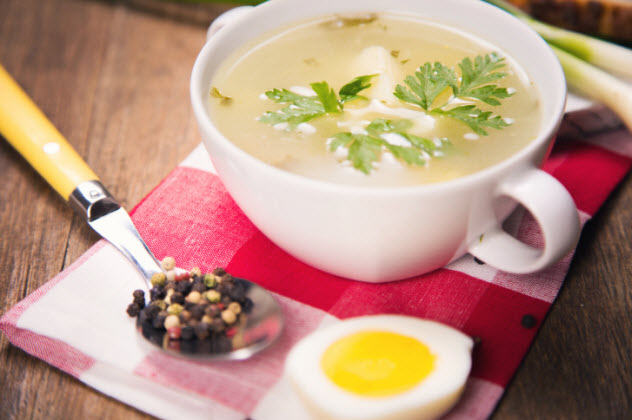
Ludwig van Beethoven is known for many things, but few know just how seriously he took his soup. According to the famous composer, only a housekeeper or cook with a pure heart could prepare a pure soup. Beethoven brooked no opposition, particular not from his long-suffering secretary Anton Schindler. If Beethoven thought a soup was bad and Schindler disagreed, Beethoven would send him an insulting note: “I do not value your judgment on the soup in the least, it is bad.”
One of Beethoven’s favorite dishes was a mushy bread soup, which he consumed every Thursday with 10 large eggs to be stirred into the soup. He inspected the eggs by holding them to the light and then cracking them open with his hand. Woe to the housekeeper if they weren’t all entirely fresh. Beethoven would call her in for a scolding. She only half-listened because she had to be ready to flee, as it was Beethoven’s custom to pelt her with the eggs as a punishment.
According to Ignaz von Seyfried, an opera conductor during Beethoven’s time: “[Beethoven’s housekeeper] held herself in readiness to beat a quick retreat before, as was customary, the cannonade was about to begin, and the decapitate batteries would begin to play upon her back and pour out their yellow-white, sticky intestines over her in veritable lava streams.”
8 Gerald Ford’s Strange Lunch
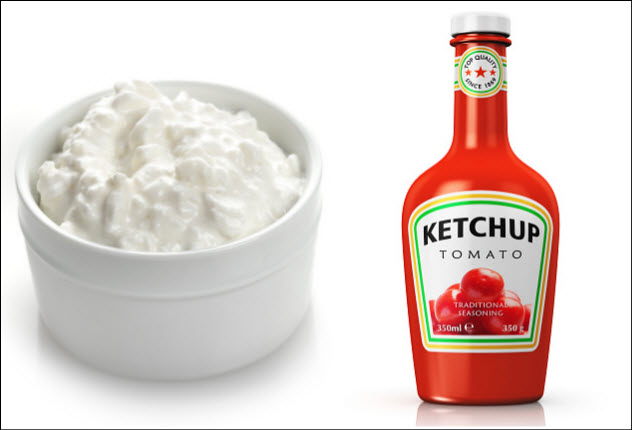
It is a commonly cited piece of trivia that President Richard Nixon ate a daily lunch of cottage cheese covered in ketchup. After he was elected president, an article in the Washingtonian quipped that elegant White House dinners had been replaced by cottage cheese and ketchup. He even had cottage cheese with pineapple slices for lunch on the day that he announced his resignation from the presidency.
Less commonly known is that President Gerald Ford was also an aficionado of the bizarre but strangely appealing lunch menu item, which he consumed every day while reading or working. An Air Force One staffer revealed in the book Inside the White House:
President Ford had A-1 sauce and ketchup, mostly A-1 sauce, with the cottage cheese. We always had a vegetable garnish with spring onions, celery sticks, radishes. We always served ketchup and A-1 sauce with it. In most cases, he used A-1 sauced mixed in. [ . . . ] When we were going to land, he used mouthwash because of the onions.
Ford also liked a drink, although he could usually handle his alcohol. He once got drunk on martinis on Air Force One while returning from a meeting with the Soviet premier. That same staffer said, “We put him to bed. In the middle of the flight, he came out in his underwear and said ‘Where is the head?’ Normally, he knew where the head is. He could walk. He was slurring words. It was the one time he overindulged and was tipsy.”
7 Nicolas Cage’s Diet Of Dignified Animals
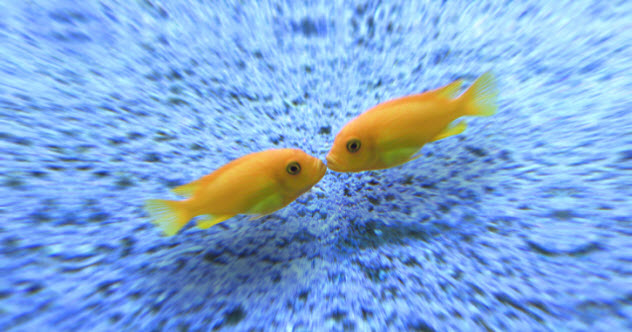
Nicolas Cage is known for a storied career of both great and terrible performances. There are certainly enough strange things to say about him, but his diet may top them all. He only consumes animals that he judges as mating in a “dignified way.”
Explaining the reason for his choice to The Sun, Cage said, “I have a fascination with fish, birds, whales—sentient life—insects, reptiles. I actually choose the way I eat according to the way animals have sex. I think fish are very dignified with sex. So are birds. But pigs, not so much. So I don’t eat pig meat or things like that. I eat fish and fowl.”
He may not eat those salacious swine, but he has consumed strange things in the name of art. The 1988 movie Vampire’s Kiss called for Cage to eat a live cockroach, which he did with some difficulty. “Every muscle in my body didn’t want to do it,” said Cage to The Telegraph. “But I did it anyway.”
6 Henry Ford’s Weeds

Henry Ford was a picky eater who usually had nuts or raisins in his pocket. In his youth, he was largely uninterested in food and mostly moved it around on his plate to give the appearance of eating it. This changed when he started to perceive his body as a machine and his stomach as a boiler that he needed to give the right fuel.
The act of eating was more practical than sensual, and Ford experimented with wild weeds as a source of nutrition. His dietary experiments caused misery to his business associates, although they were better received by his friend George Washington Carver, who was of a like mind on that sort of thing.
Even though Ford received a salary of almost $1 million a year, he preferred a diet of “roadside greens,” which were essentially edible weeds that Ford gathered from his garden or outside. According to biographer Sidney Olson: “There is nothing quite like a dish of stewed burdock, followed by a sandwich of soybean bread filled with milkweeds, to set up a man for an afternoon’s work.”
The weeds that Ford collected were often lightly boiled or stewed and then used in salads or sandwiches. However, the diet seemed to pay off because Henry Ford was rarely sick and lived to the ripe old age of 83.
5 Evo Morales’s Gay Chicken
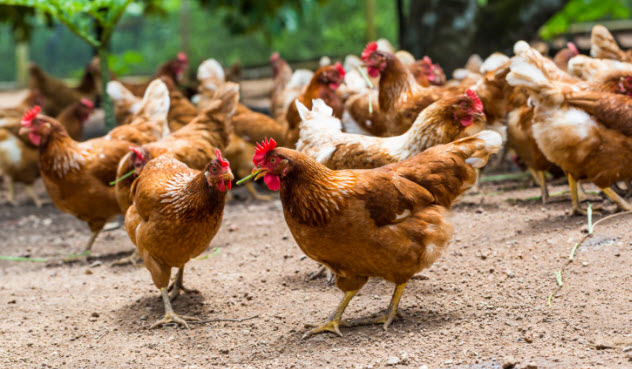
Bolivian President Evo Morales caused controversy in 2001 when he claimed that eating hormone-injected chicken was a root cause of homosexuality. At the World People’s Summit on Climate Change and the Rights of Mother Earth in Cochabamba, he shocked the socially progressive audience with his views. “When we talk about chicken, it’s pumped full of female hormones,” he said, “and so when men eat this chicken, they stray from being men.”
He also linked the consumption of fowl with male baldness. Within a few hours, the impact of his comments had spread to the international media.
Morales’s government quickly went into spin doctor mode, insisting that the president had been referring only to genital abnormalities. In a public statement, the Foreign Relations Ministry explained, “[Morales] made no mention of sexuality. Rather, he said that eating chicken that has hormones changes our own bodies. This point of view has been confirmed by scientists, and even the European Union has prohibited the use of some hormones in food.”
Many gay rights activists were unconvinced. The president of the Argentina Homosexual Community, Cesar Cigliutti, said, “It’s an absurdity to think that eating hormone-containing chicken can change the sexual orientation of a person. By following that reasoning, if we put male hormones in a chicken and we make a homosexual eat it he will transform into a heterosexual.”
In a different vein, Morales also took shots at Coca-Cola. “If the plumber comes to your house and can’t get the job done with all his tools,” said Morales, “have him pour Coca-Cola down the clogged toilet, and problem solved.” This was received more favorably as many in Bolivia believe that the US soda company exploits Bolivia’s coca supplies. Also, a local company had just launched a rival drink called “Coca-Colla,” with “Colla” being a reference to the native Andean highland people.
Morales has a long-standing antipathy toward unhealthy American food, complaining at the UN in 2013 that “the fast food of the West is a great harm to humanity.” He accused fast food companies of causing cancer and conspiring to suppress the rise of quinoa as a healthy alternative source of nutrition.
4 Howard Hughes’s Food Fetishes
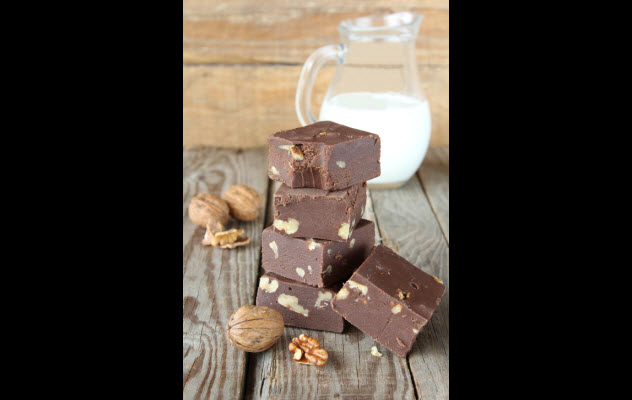
Movie mogul, industrialist, and businessman Howard Hughes suffered from obsessive-compulsive disorder, which was reflected in his eating habits. He gave a number of bizarre food preparation and serving orders to his servants, including wrapping spoon handles in tissue paper. They were then sealed with cellophane and wrapped in a second piece of tissue paper. He would only touch the covered handles because he was obsessively afraid of germs.
His servants had to open cans of food in a specific way, too. First, the servant would hold the can under warm running water. Then he or she used a brush and special bars of soap to remove the label 5 centimeters (2 in) from the top of the can. Next, the can was soaked to remove any dust and germs. Then the bottom was cleaned in the same manner as the top. All the indentations of the can also had to be scrubbed with soap and rinsed. Throughout the process, the servant was not permitted to let go of the can.
Hughes suffered constipation because he refused to eat leafy vegetables. His meals were very uniform, and he enjoyed a regimented menu that he changed every few months. He usually ate a medium-rare butterfly steak with 12 peas of uniform size. If any of the peas were too large, Hughes would send them back to the kitchen to be replaced. He ate almost every meal alone. According to his chef, Hughes didn’t even eat Thanksgiving or Christmas dinners with his wife.
But Hughes liked fudge. When he became reclusive in his later years, he virtually subsisted on chocolate bars and milk. He isolated himself in a studio near his home, surrounded by empty milk bottles and containers which he used to relieve himself when nature called. This reclusive lifestyle took a toll on his health. When he finally died, people compared the state of his body to that of a Japanese prisoner of war.
3 Hitler’s Flatulent Vegetarianism
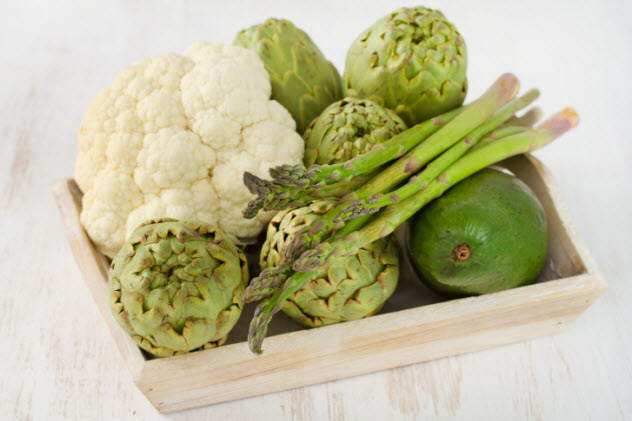
Many meat lovers enjoy telling their vegetarian friends that Adolf Hitler was a vegetarian, and vegetarians often vehemently disagree. The truth is more nuanced. Until the early 1930s, Hitler showed a penchant for certain meat products, particularly liver dumplings and sausages. He is said to have subscribed to Wagner’s theory that “[the] thirst [for flesh and blood] . . . can never be slaked, and fills its victims with a raging madness, not with courage.”
Yet he did not completely turn against the consumption of meat until his niece and possible lover Geli Raubal committed suicide in 1931. After that, he refused to eat breakfast ham. “It is like eating a corpse!” he said.
Hitler also turned away from meat because he believed it caused chronic constipation and flatulence. He ate his vegetables raw or pulped into a mush. Some of his favorite foods were oatmeal with linseed oil, cauliflower, cottage cheese, boiled apples, artichoke hearts, and asparagus tips in white sauce.
The high-fiber diet had precisely the opposite effect on his bowel drama. After Hitler consumed a particularly large plate of vegetables, his physician, Theo Morell, recorded in his diary that Hitler experienced “constipation and colossal flatulence . . . on a scale I have seldom encountered before.”
Of course, this is not only the fault of his vegetarian diet but also the ridiculous regimen of drugs and treatments administered by his doctor, which included chamomile enemas and a heavy dose of supplements. Some of those supplements were vitamins, testosterone, liver extracts, laxatives, sedatives, glucose, opiates, and poisonous strychnine tablets for gas.
The argument over Hitler’s vegetarianism is a bit of a red herring. He did occasionally indulge in animal products, but so do 70 percent of vegetarians. Even so, Hitler’s decision to become a vegetarian in no way refutes the moral arguments that vegetarians hold against meat eating.
2 Mussolini’s Milk Addiction
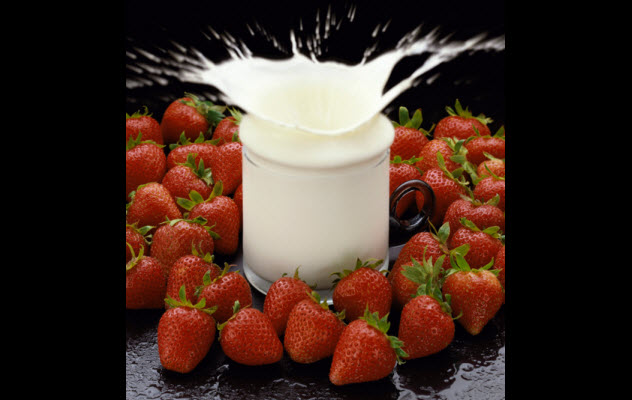
Benito Mussolini also had digestive problems and weird eating habits, such as refusing to eat anything at banquets. He believed that eating was an activity to which one should devote one’s complete attention and that eating in the presence of others would make one “apt to eat wrongly.”
In 1925, he vomited blood while at his house in Rome and was forced to take several weeks off from public appearances. Rumors circulated that Mussolini might have to be replaced as the National Fascist Party leader. Doctors diagnosed him with a stomach ulcer and recommended a drastic change in diet after he refused to have surgery. His new diet was mainly composed of fruit and up to 3 liters (1 gal) of milk every day. This apparently didn’t help him because he suffered another ulcer in 1929.
After the Allies invaded Italy and the Fascists retreated to a German satellite state called the Salo Republic, Mussolini sought the assistance of a physician named Dr. Zachariae. Shocked by his patient’s appearance, the doctor said, “I found myself before a ruin of a man who was evidently on the brink of the tomb.” Mussolini suffered from ulcers, anemia, constipation, insomnia, and low blood pressure. His skin was dry and inelastic, and his abdominal area around his liver was engorged.
Zachariae blamed Mussolini’s ridiculous milk diet and cut his milk intake to 0.25 liters (0.5 pt) each day for a week. Then he went cold turkey. The doctor began to treat Mussolini with small doses of vitamins and hormones, which had an immediate positive effect. After his liver returned to its normal size, Mussolini remarked, “I must tell you I feel liberated. I no longer feel pains in my stomach, and I don’t fear the night.”
The doctor insisted that Mussolini eat some light vegetables like carrots and potatoes, which he had once been unable to stomach, and to take his tea without milk. Although Mussolini preferred vegetarianism, the doctor insisted that his patient eat small amounts of boiled chicken and fish to increase his protein intake. Along with injections of vitamins B and C, the new diet caused his red blood cell count to rise and his health to improve. Despite Mussolini occasionally refusing to take food while the Italian people were starving, Zachariae later boasted that he had restored Mussolini to the health of a man of 40.
1 Kim Jong Il’s Gastronomy
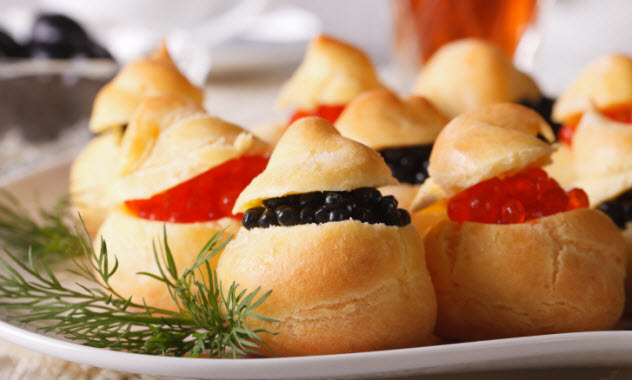
Due to the testimony of Kim Jong Il’s former personal chef, Kenji Fujimoto, we know quite a bit about the eating habits of the former North Korean tyrant. While much of the country was starving, Kim indulged in expensive and elaborate food and drink. He had a wine cellar with over 10,000 bottles and a library with thousands of cookbooks.
Kim was committed to getting the best food and often sent Fujimoto on foreign excursions to pick up delicacies: Iran and Uzbekistan for caviar, France for cognac, Denmark for pork, western China for grapes, Thailand for papayas and mangoes, and Beijing for McDonald’s fast food. Former North Korean diplomats also sent back exotic delicacies, such as camel’s feet, from the countries in which they were stationed.
Kim established an institute of top doctors and scientists to design a diet to increase his longevity. This was a source of concern, as the 158-centimeter (5’2″) dictator’s former eating habits had brought him to a weight of almost 90 kilograms (200 lb). The doctors began to inspect every grain of his rice by hand to make sure it was perfectly shaped with no cracks or chips. Kim insisted that the rice be cooked over a wood fire using trees cut from Mount Paektu, a legendary mountain on the border with China.
Fujimoto also revealed the dictator’s love of sushi. When Fujimoto sought to leave North Korea (after being banned from travel abroad), he did so with a cunning ruse. He showed the “Dear Leader” a new episode of the cooking show Iron Chef, in which the secret ingredient was sea urchin roe, or uni.
He casually mentioned that the best place to acquire the ingredient was from Rishiri Island off the coast of Hokkaido. Kim couldn’t resist sending the chef, who eluded his handlers at a fish market in Tokyo and disappeared into the crowd. Fujimoto didn’t return to North Korea until after Kim Jong Il’s death.
David Tormsen only eats shoe leather and chives. Email him at [email protected].

